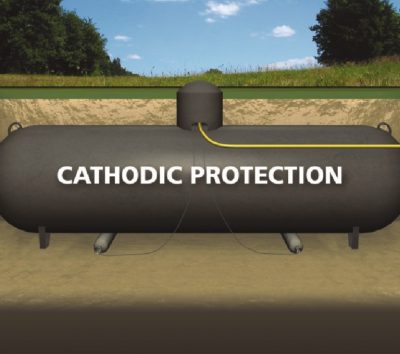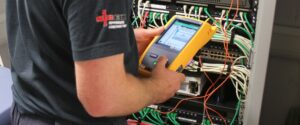
Common Cathodic Protection Interview Questions And Answers
Q1. What Is Cathodic Protection?
Answer :Cathodic Protection (CP) is a technology used to protect buried or immersed metals from corrosion. It is defined as the reduction or elimination of the corrosion process by either making the corroding metal a cathode via an impressed direct current (DC) or by connecting it to a sacrificial or galvanic anode.
Q 2. How Does Cathodic Protection Works To Prevent Rusting?
Answer : Cathodic protection prevents corrosion by converting all of the anodize (active) sites on the metal surface to cathodic (passive) sites by supplying electrical current (or free electrons) from an alternate source. Usually this takes the form of galvanic anodes, which are more active than steel.
Q 3. Is There Any Maintenance To The Cp System?
Answer : Once the CP system is installed, it is necessary to provide routine operation and maintenance. For impressed current systems, this involves visual inspection of the system and periodic checks. New advancements in technology, such as remote monitoring systems which are available from Corrpro, have provided a convenient way of maintaining CP systems.
Q 4. What Is The Cost Associated With Corrosion?
Answer : Corrosion will cost the US economy over $1 trillion annually. The total cost in the U.S. is expected to increase annually, illustrating the broad and expensive challenge that corrosion presents to equipment and materials. At 6.2% of GDP, corrosion is one of the largest single expenses in the U.S. economy yet it rarely receives the attention it requires. Corrosion costs money and lives, resulting in dangerous failures and increased charges for everything from utilities to transportation and more.
Q 5. What Is The Iccp?
Answer : ICCP may refer to: Impressed Current Cathodic Protection, a system used to control the corrosion using anodes connected to a DC power source. Institute for Certification of Computing Professionals, a non-profit organization that develops and administers certifications for the information technology industry.
Q 6. How Do We Know Cathodic Protection Works?
Answer : CP has been in use for decades to protect underground pipelines, ship hulls, offshore oil and gas production platforms, underground steel storage tanks, interior submerged portions of tanks and many other structures that are exposed to marine or corrosive environments.
Q 7. What kind of Materials Are Used For Sacrificial Anodes?
Answer : The materials used for sacrificial anodes are either relatively pure active metals, such as zinc or magnesium, or are magnesium or aluminum alloys that have been specifically developed for use as sacrificial anodes. In applications where the anodes are buried, a special backfill material surrounds the anode in order to insure that the anode will produce the desired output.
Since the sacrificial anode works by introducing another metal surface with a more negative electronegative and much more anodic surface. The current will flow from the newly introduced anode and the protected metal becomes cathodic creating a galvanic cell. The oxidation reactions are transferred from the metal surface to the galvanic anode and will be sacrificed in favor of the protected metal structure.
Q 8. Why Sacrificial Anodes Used ?
Answer : Sacrificial Anodes are used to protect the hulls of ships, water heaters, pipelines, distribution systems, above-ground tanks, underground tanks, and refineries. The anodes in sacrificial anode cathodic protection systems must be periodically inspected and replaced when consumed.
Q 9. How Are Sacrificial Anodes Used?
Answer :Sacrificial anodes are normally supplied with either lead wires or cast-m straps to facilitate their connection to the structure being protected. The lead wires may be attached to the structure by welding or mechanical connections. These should have a low resistance and should be insulated to prevent increased resistance or damage due to corrosion. When anodes with cast-in straps are used, the straps can either be welded directly to the structure or the straps can be used as locations for attachment.
A low resistance mechanically adequate attachment is required for good protection and resistance to mechanical damage. In the process of providing electrons for the cathodic protection of a less active metal the more active metal corrodes. The more active metal (anode) is sacrificed to protect the less active metal (cathode). The amount of corrosion depends on the metal being used as an anode but is directly proportional to the amount of current supplied.
Q 10. What Is A Cathodic Reaction?
Answer :The anode is the electrode at which a net oxidation reaction occurs, whereas cathodes are electrodes at which net reduction reactions occur. All cathodic protection systems require an anode, a cathode, an electric circuit between the anode and cathode, and an electrolyte.

